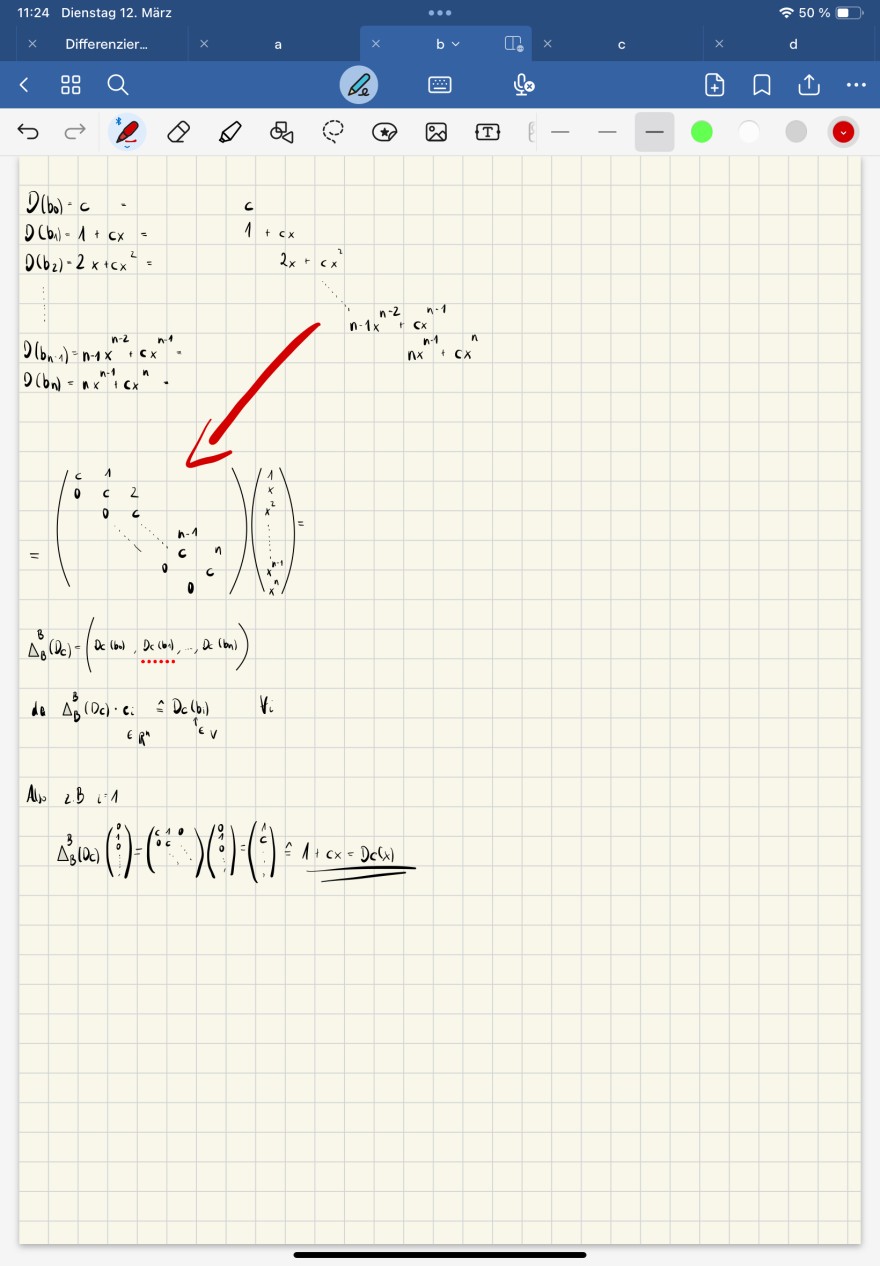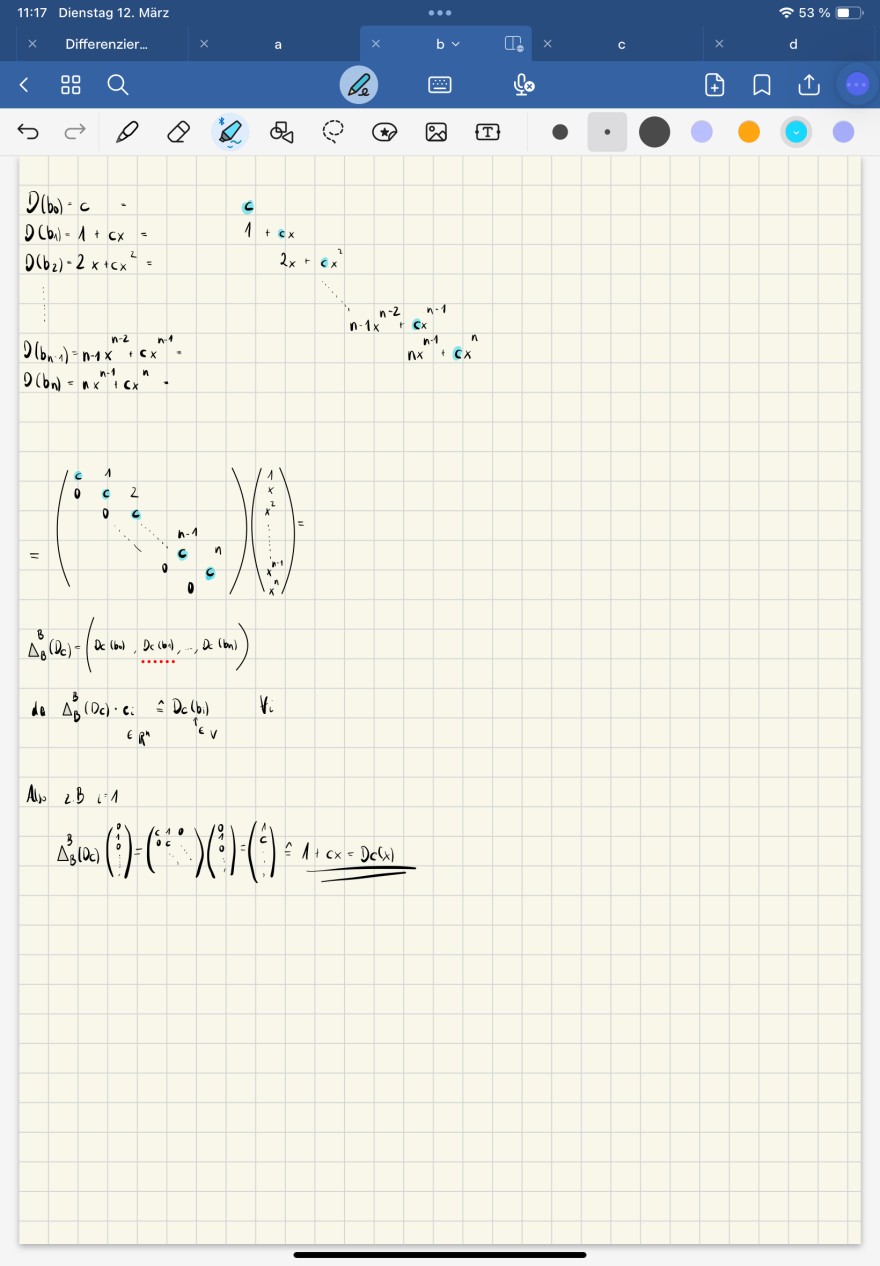Hallo, ich bräuchte dringend eine Erklärung für einen Rechenschritt, Vielleicht kann jemand es verstehen und mir erklären? 
Text erkannt:
\( \begin{array}{ll} D\left(b_{0}\right)=c & c \\ D\left(b_{1}\right)=1+c x= & 1+c x \\ D\left(b_{2}\right)=2 x+c x^{2}= & 2 x+c x^{2} \end{array} \)
Alos \( 2 . B \quad=1 \)
\( \Delta_{B}^{B}\left(D_{c}\right)\left(\begin{array}{l} 0 \\ 0 \\ 0 \end{array}\right)=\left(\begin{array}{cc} c_{1} & 0 \\ 0 & 0 \\ & \end{array}\right)\left(\begin{array}{l} 0 \\ 1 \\ 0 \end{array}\right)=\left(\begin{array}{l} 1 \\ c \\ 1 \end{array}\right) \cong \underline{1+c_{x}=D_{c}(x)} \)

Text erkannt:
\( \begin{array}{l} \Delta_{B}^{B}\left(D_{c}\right)=\left(\begin{array}{lll} D_{C}\left(b_{0}\right), & D_{c}\left(b_{0}\right), \ldots, D_{c}\left(b_{n}\right) \\ \ldots \ldots . \end{array}\right) \\ \text { de } \Delta_{B}^{B}\left(D_{C}\right) \cdot c_{i} \xlongequal[\in \mathbb{R}^{n}]{ } \hat{=} D_{c}\left(b_{i}\right) \quad V_{i} \\ \end{array} \)
\( A 10 \quad 2 . B_{i}=1 \)